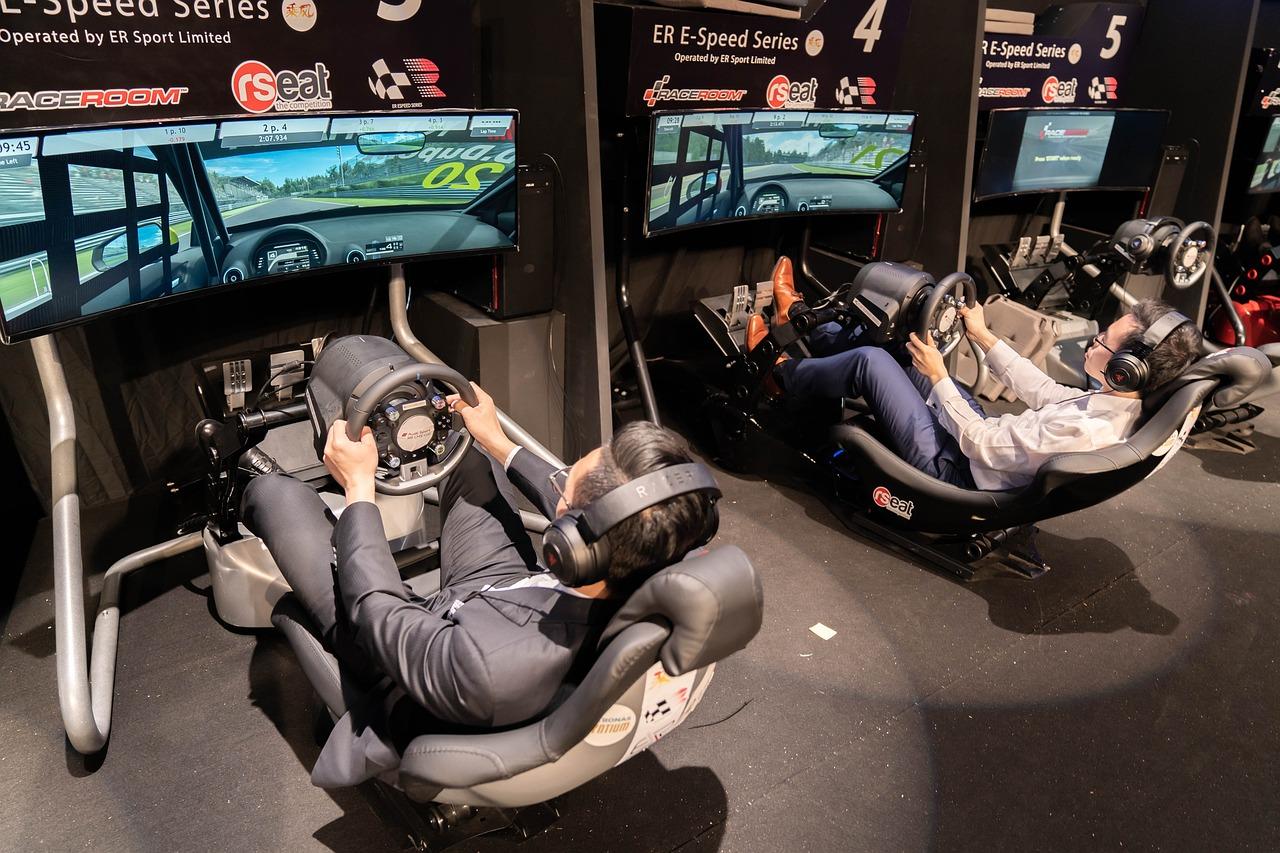
The Rise of Esports: How Competitive Gaming is Changing the Industry
Iren
- 0
- 704
Early Beginnings of Competitive Gaming
The journey of esports from niche hobby to global phenomenon is a testament to the power of technology and human competitive spirit. The roots of competitive gaming can be traced back to the early days of video games, with local arcade tournaments drawing crowds of enthusiasts eager to prove their skills.
Key milestones in the evolution of esports:
- 1972: First recorded video game competition at Stanford University
- 1980: Atari’s Space Invaders Championship attracts 10,000 participants
- 1990: Nintendo World Championships tour across the United States
- 1997: Red Annihilation Quake tournament, considered one of the first true esports events
- 2000: World Cyber Games and Electronic Sports World Cup founded
- 2002: Major League Gaming (MLG) established
These early events laid the groundwork for what would become a multi-billion dollar industry. The transition from local tournaments to international competitions was fueled by advancements in gaming technology and the growing popularity of multiplayer games.
The Rise of Online Gaming and Streaming Platforms
The advent of high-speed internet and sophisticated online gaming platforms marked a turning point for esports. Suddenly, players could compete with others from around the world without leaving their homes. This global connectivity expanded the talent pool and audience base exponentially.
Streaming platforms, particularly Twitch, played a crucial role in catapulting esports into the mainstream. Launched in 2011, Twitch quickly became the go-to platform for gamers to broadcast their gameplay and for fans to watch professional tournaments.
| Year | Twitch Milestone |
|---|---|
| 2011 | Twitch launches |
| 2013 | 45 million unique viewers |
| 2014 | Acquired by Amazon for $970 million |
| 2020 | 2 million average concurrent viewers |
The rise of streaming platforms democratized content creation in the gaming world. Amateur players could build followings, while professional gamers and teams gained new avenues for fan engagement and revenue generation.
The Business of Esports

Revenue Streams in Esports
The esports industry has diversified its revenue streams, creating a robust ecosystem that supports players, teams, and event organizers.
| Revenue Stream | Description | Percentage of Total Revenue (2023 estimate) |
|---|---|---|
| Sponsorships | Brand partnerships and endorsements | 45% |
| Media Rights | Broadcast and streaming deals | 25% |
| Publisher Fees | Payments from game publishers | 15% |
| Merchandise & Tickets | Sales of team gear and event tickets | 10% |
| Digital | In-game purchases and betting | 5% |
The growth of prize pools in major tournaments has been staggering. The International, Dota 2’s premier event, saw its prize pool increase from $1.6 million in 2011 to over $40 million in 2021, largely funded by in-game purchases from fans.
The Role of Sponsorships and Brand Partnerships
Non-endemic brands have recognized the value of esports’ young, engaged audience. Companies like Coca-Cola, BMW, and Louis Vuitton have entered the space, bringing legitimacy and significant financial support.
Successful brand partnerships in esports:
- Intel and ESL’s long-standing relationship, powering tournaments worldwide
- Red Bull’s creation of its own esports teams and events
- Nike’s design of team jerseys for League of Legends Pro League in China
- Mercedes-Benz sponsorship of multiple esports organizations
These partnerships go beyond traditional advertising, often involving product integration, custom in-game content, and experiential marketing at live events.
The Impact of Esports on Traditional Sports
The Convergence of Esports and Traditional Sports
Traditional sports organizations have recognized the potential of esports to reach new audiences and diversify their offerings.
Examples of convergence:
- NBA 2K League: A joint venture between the NBA and Take-Two Interactive
- Formula 1 Esports Series: Official F1 esports competition with team participation
- Football clubs like PSG, Manchester City, and Schalke 04 fielding esports teams
- Olympic Virtual Series: IOC-sanctioned event featuring five virtual sports
This convergence has led to cross-pollination of best practices in areas such as player training, event production, and fan engagement.
Esports as a Pathway to New Audiences
Esports has become a crucial tool for traditional sports to engage with younger demographics. The average esports fan is younger and more tech-savvy than the typical traditional sports fan, presenting both challenges and opportunities.
| Demographic | Average Age | Male/Female Ratio | Tech Adoption Rate |
|---|---|---|---|
| Esports Fans | 26 | 60/40 | High |
| Traditional Sports Fans | 42 | 70/30 | Medium |
Traditional sports are learning from esports’ success in digital engagement, adopting strategies like interactive streaming experiences and social media-driven content.
The Cultural Influence of Esports

Esports as a Global Phenomenon
Esports has transcended cultural and geographical boundaries, creating a truly global community of players and fans.
Key global esports markets:
- North America: Home to major leagues and teams
- China: Largest esports market by revenue
- South Korea: Pioneering esports infrastructure and cultural acceptance
- Europe: Diverse market with strong regional leagues
- Southeast Asia: Rapidly growing market with mobile esports dominance
The international nature of major tournaments has fostered a unique blend of national pride and global camaraderie among fans.
The Role of Esports in Youth Culture
Esports has become deeply embedded in youth culture, influencing fashion, language, and social interactions.
Cultural impacts of esports:
- Fashion: Esports team jerseys and gaming-inspired streetwear
- Language: Gaming terms entering mainstream vocabulary
- Social norms: Acceptance of gaming as a legitimate hobby and career path
- Celebrity culture: Esports stars gaining mainstream recognition
The rise of gaming influencers on platforms like YouTube and TikTok has further cemented esports’ place in youth culture, blurring the lines between gaming, entertainment, and lifestyle content.
Challenges Facing the Esports Industry
Issues with Player Well-Being and Burnout
The intense competition and demanding schedules in esports have raised concerns about player health and longevity.
| Challenge | Potential Solution |
|---|---|
| Physical strain | Ergonomic setups, regular exercise routines |
| Mental stress | Sports psychology support, structured breaks |
| Burnout | Improved work-life balance, career transition support |
| Performance pressure | Coaching on stress management, team support systems |
Industry initiatives like the Player Well-Being Initiative by the Esports Integrity Commission aim to address these issues systematically.
Regulatory and Ethical Considerations
As esports grows, it faces increased scrutiny and the need for standardized governance.
Key regulatory challenges:
- Doping: Addressing the use of performance-enhancing drugs
- Match-fixing: Combating corruption and illegal betting
- Age restrictions: Balancing competitiveness with player welfare
- Intellectual property: Navigating the rights of game publishers vs. tournament organizers
The establishment of bodies like the Esports Integrity Commission (ESIC) represents a step towards industry-wide standards and ethics.
The Future of Esports
Technological Innovations and Their Impact
Emerging technologies are set to revolutionize the esports experience for players and spectators alike.
Potential impacts of new technologies:
- Virtual Reality (VR): Immersive spectator experiences and new competitive formats
- Augmented Reality (AR): Enhanced live event experiences and training tools
- Artificial Intelligence (AI): Advanced analytics for players and teams, AI-powered opponents
- 5G networks: Ultra-low latency for mobile esports and cloud gaming
Experiments like Virtuix Omni’s VR treadmill for physical esports and Hado’s AR dodgeball are pushing the boundaries of what’s possible in competitive gaming.
Predictions for the Next Decade
The esports industry is poised for continued growth and evolution in the coming years.
Predictions for esports’ future:
- Inclusion as a medal event in the Olympics by 2032
- Esports-focused education programs at major universities
- Integration of esports elements into traditional sports broadcasts
- Development of purpose-built esports arenas in major cities worldwide
- Emergence of new esports titles based on emerging technologies like AR and VR
The convergence of esports and traditional entertainment is likely to accelerate, with crossovers into film, music, and fashion becoming more common.
Conclusion
The rise of esports represents a fundamental shift in the entertainment landscape. From its humble beginnings in arcade competitions to filling stadiums and attracting millions of online viewers, competitive gaming has become a cultural and economic force.
As esports continues to evolve, it challenges traditional notions of sport, entertainment, and competition. Its global reach, technological innovation, and deep connection with youth culture position it not just as a passing trend, but as a transformative influence on the future of interactive entertainment.
The coming years will likely see further integration of esports into mainstream culture, continued technological advancements, and the development of more sophisticated ecosystems to support players, teams, and fans. As the lines between physical and digital realms blur, esports stands at the forefront of a new era in competitive entertainment.



